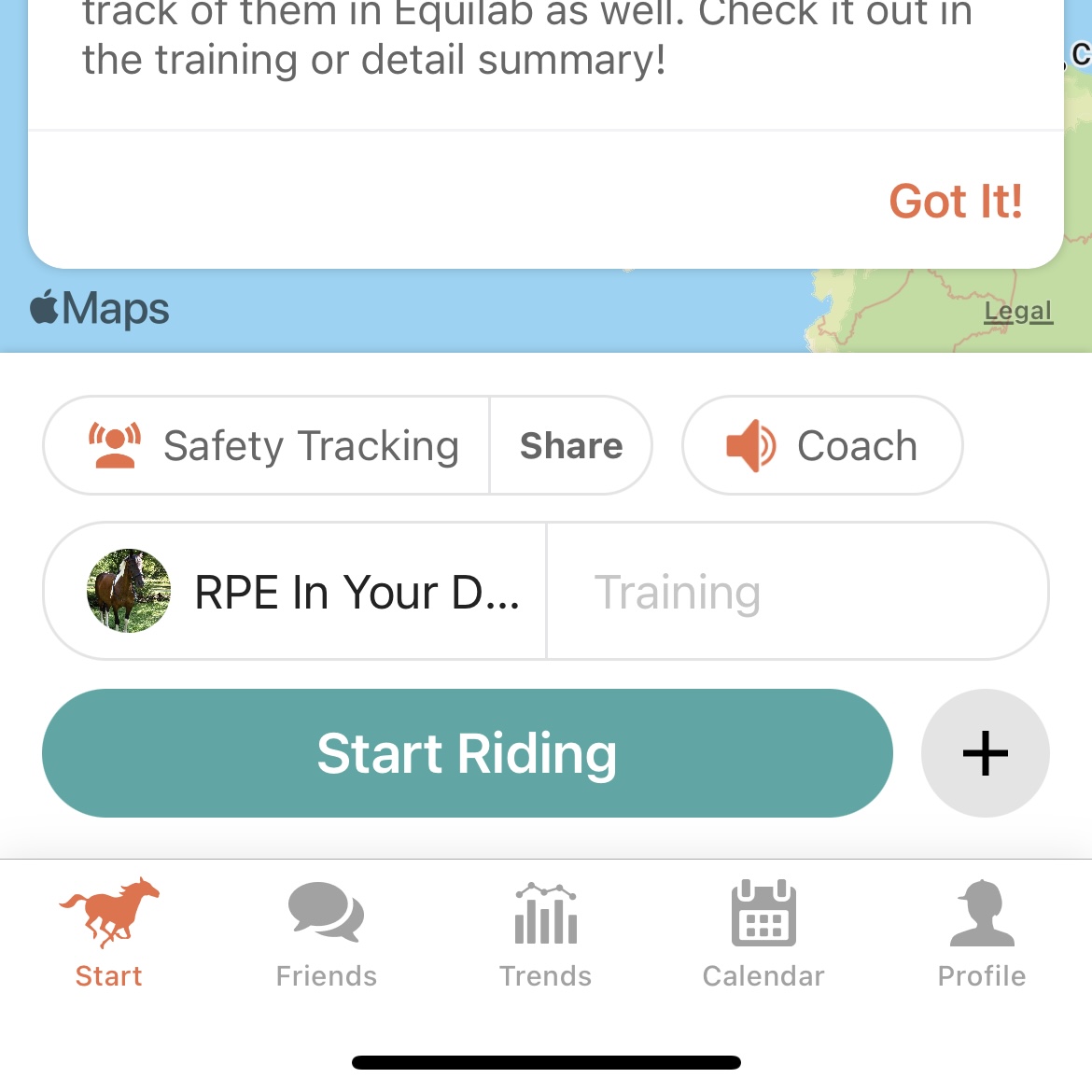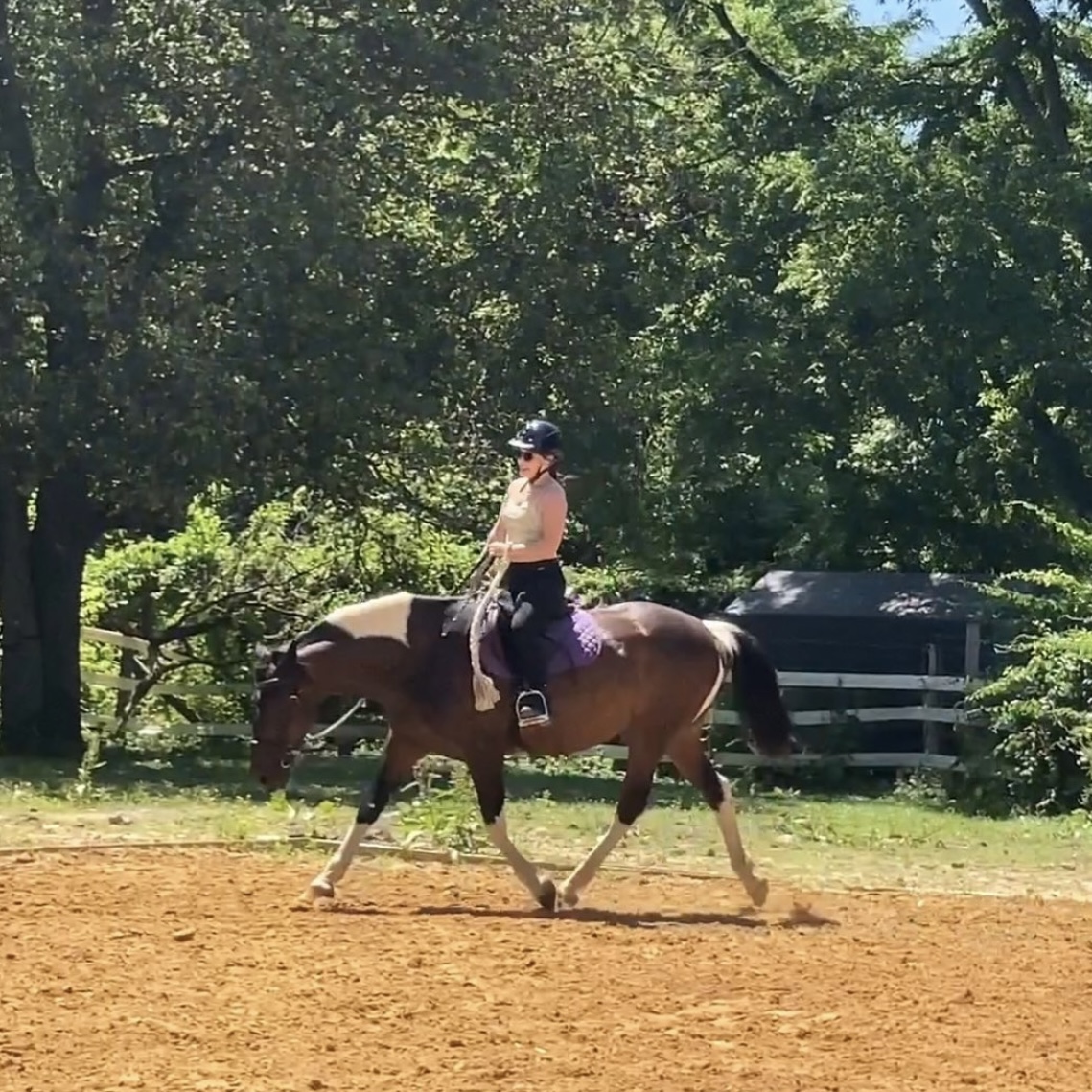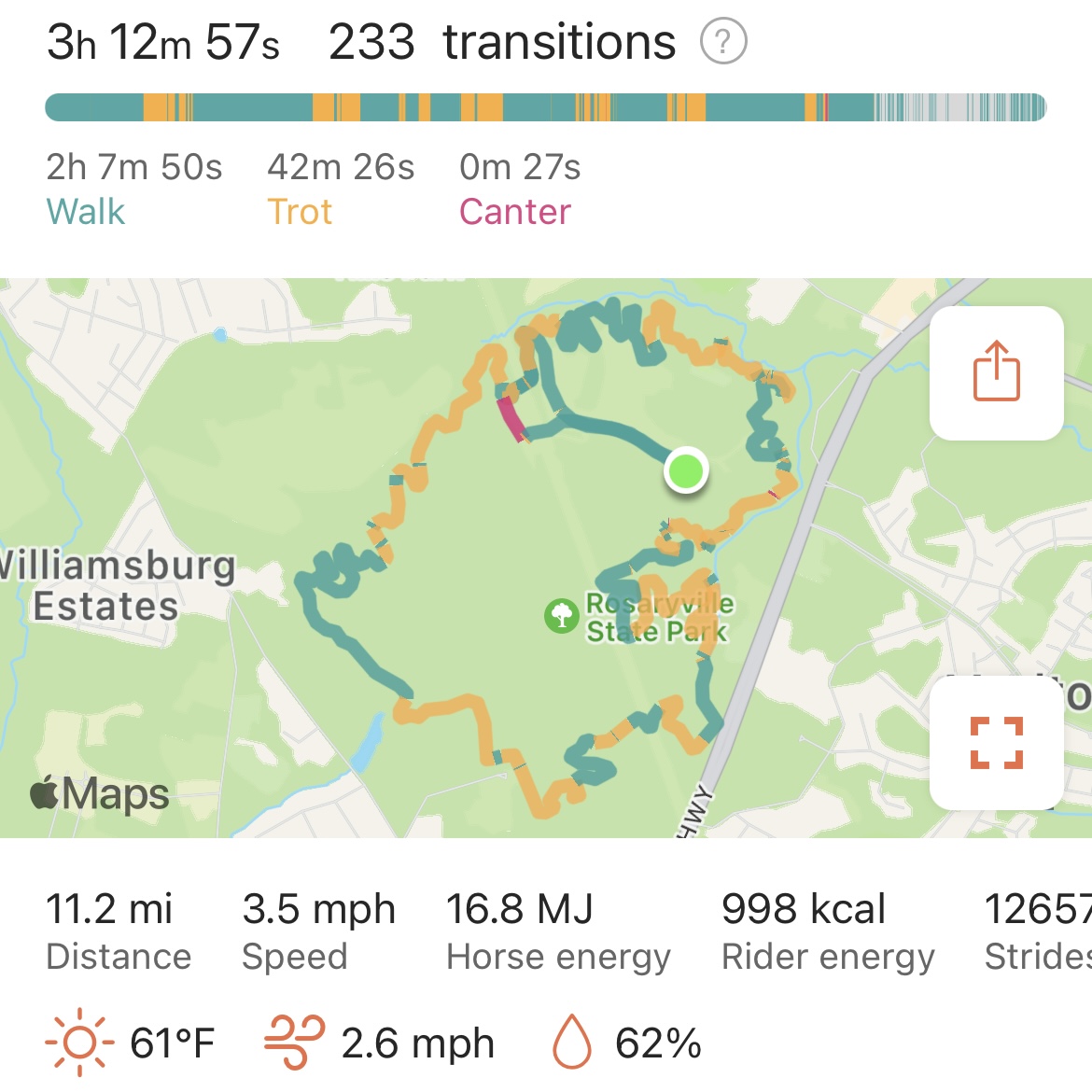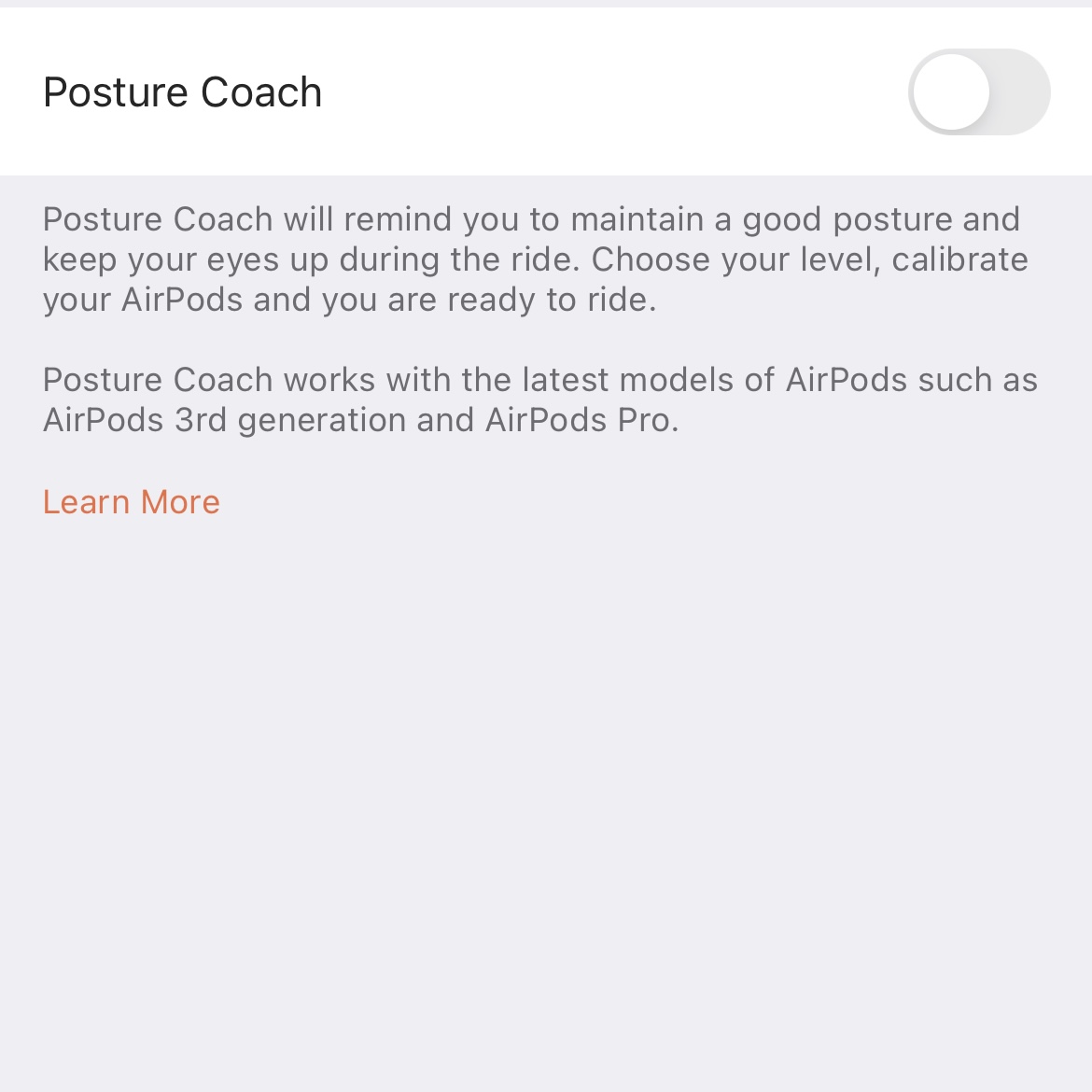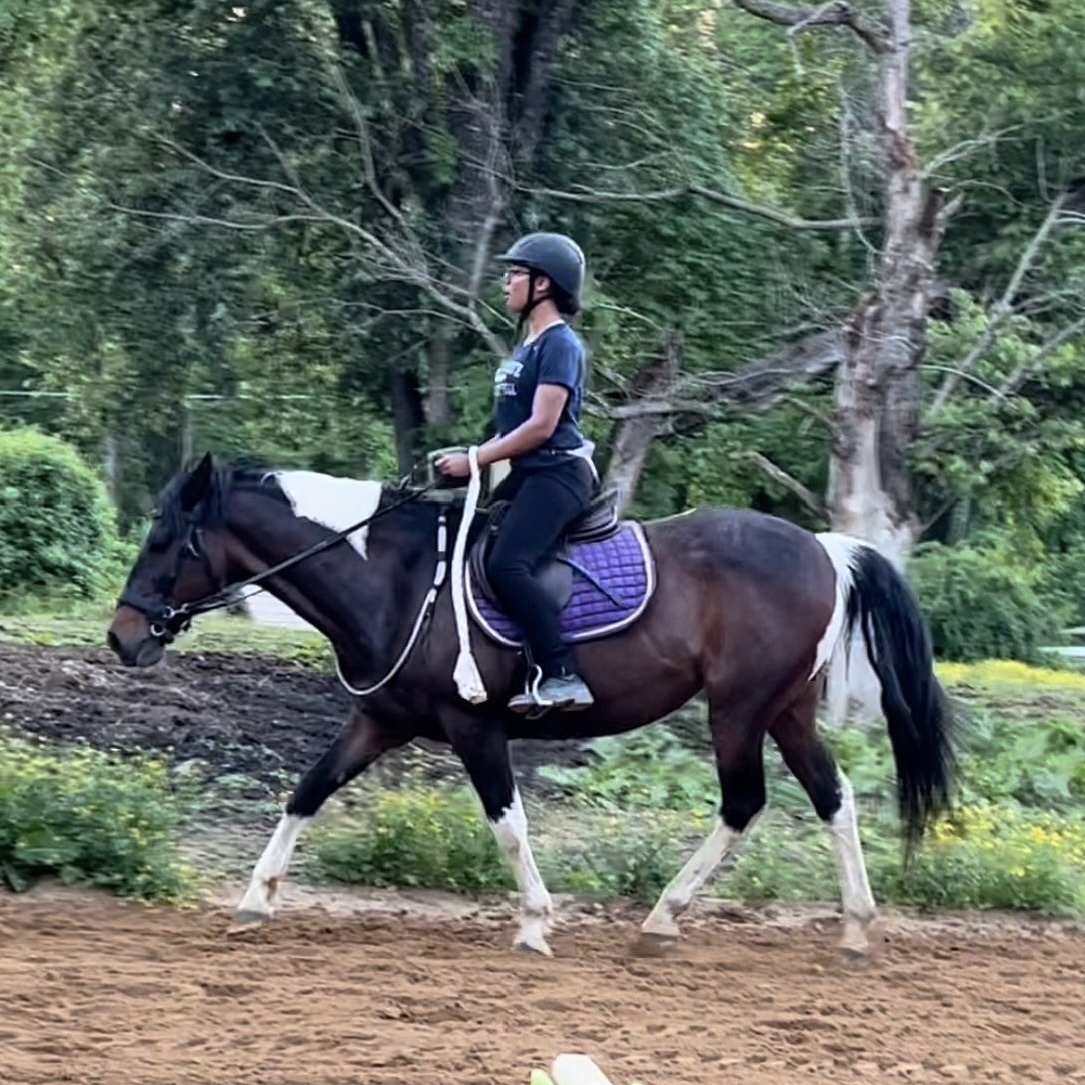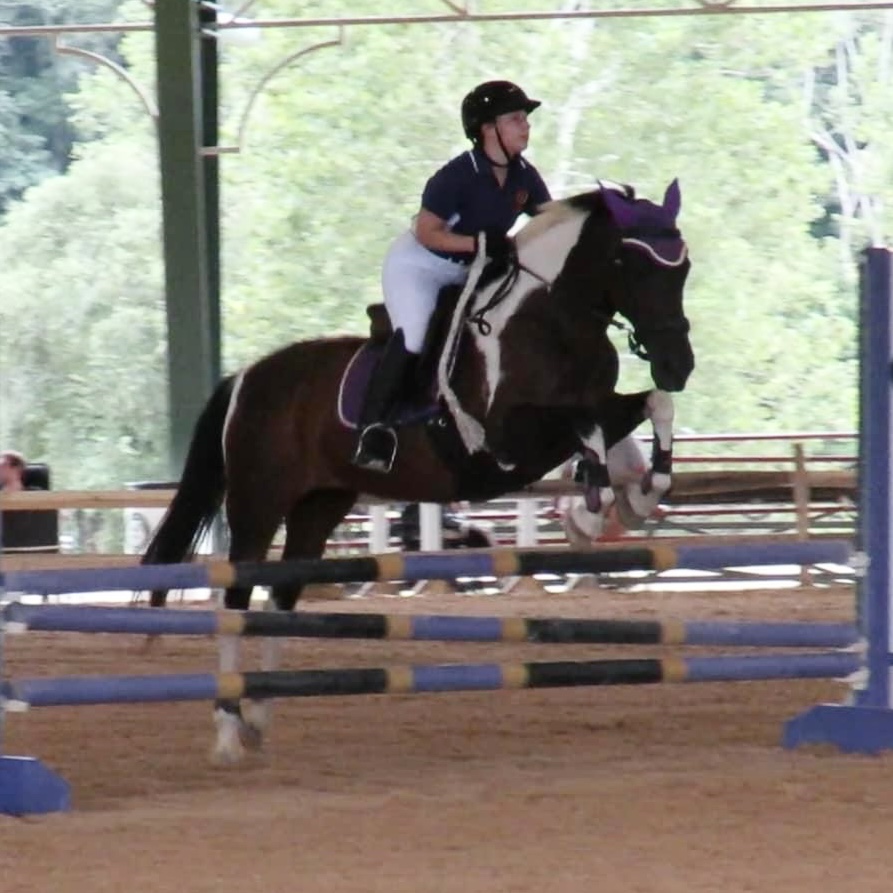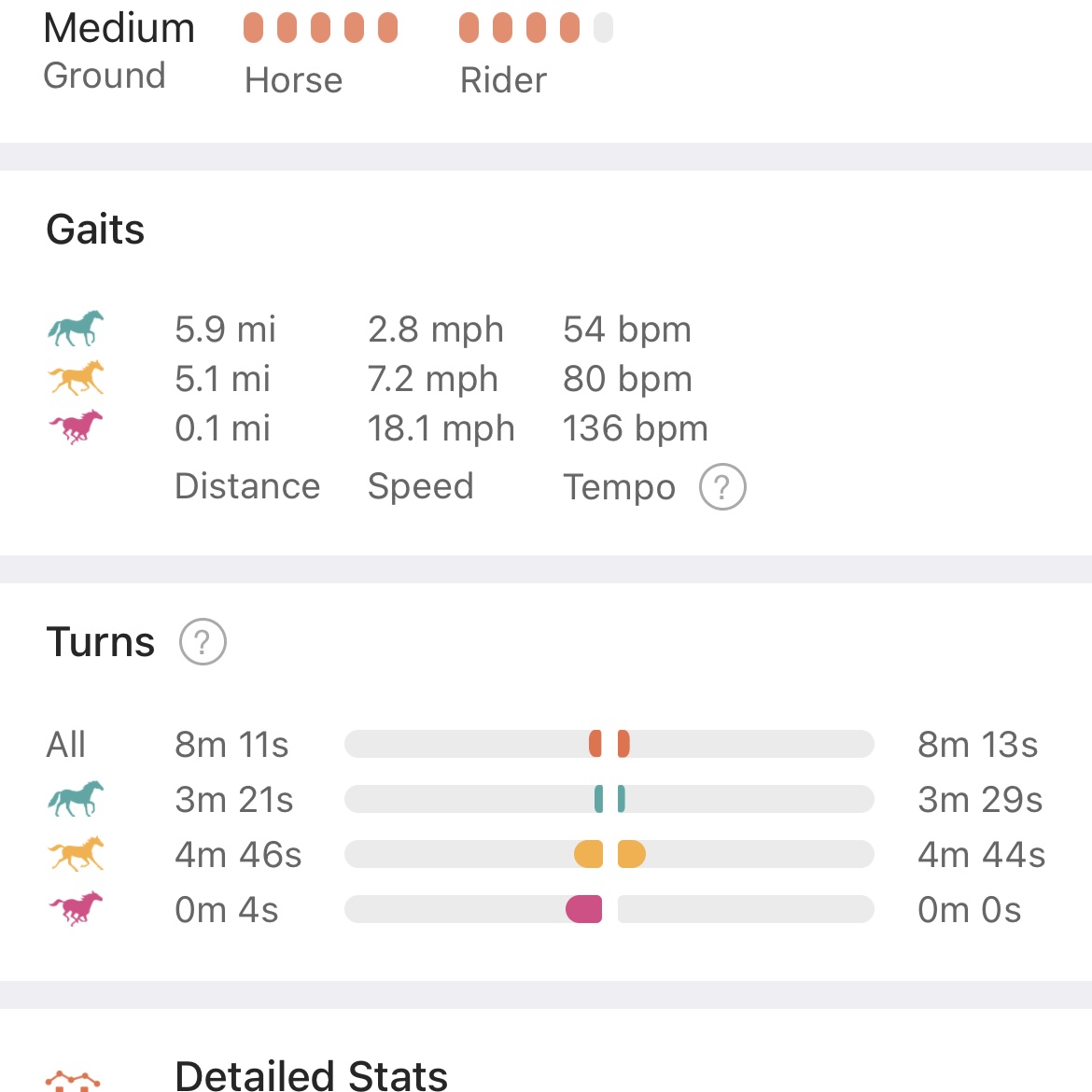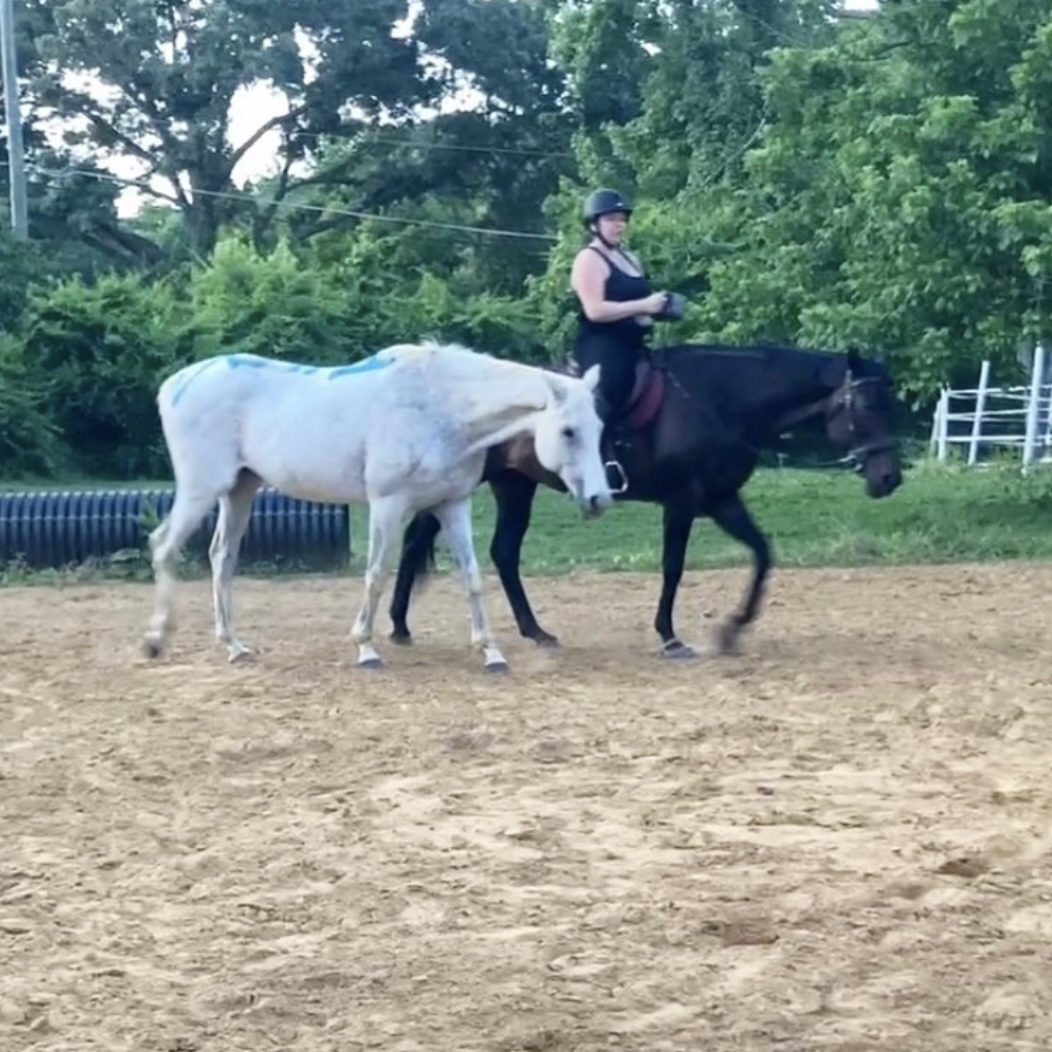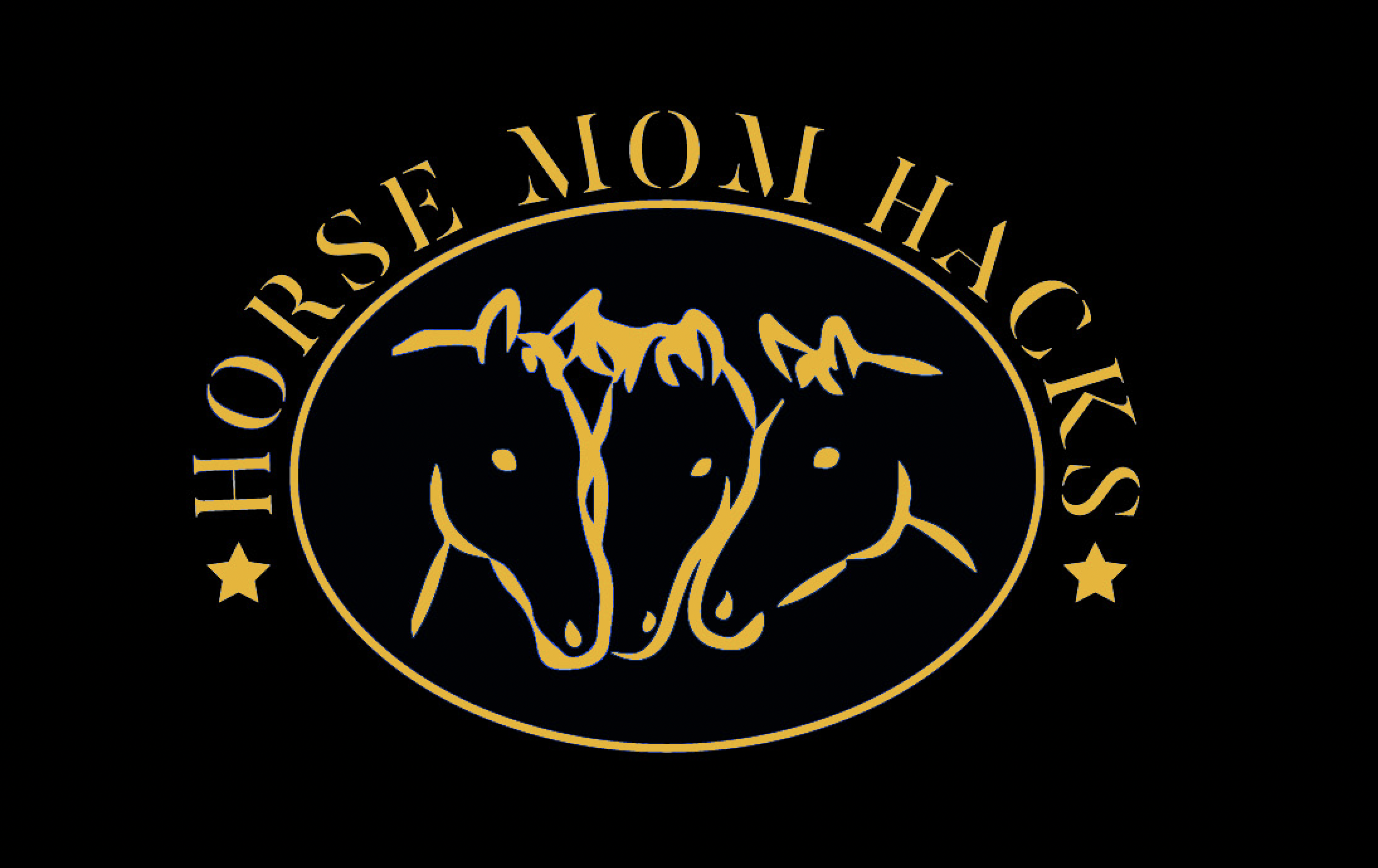Rider Aids
Product Reviews
This page is dedicated to aids that can help riders better learn and train their position and skills.
EquiCube & Hand Position Aids
Many riders have trouble figuring out what to do with their hands, alongside forgetting to use their leg aids for turning as they default to single-rein steering. There are various aids that riders can use, both commercially and DIY that can help a rider start forming better habits and develop a clearer understanding of what their aids are telling their horse.
A personal favorite aid of mine is the EquiCube. This little rubber block not only is a fantastic steering training aid for riders, but it also works to develop your core muscles and center of balance in holding up the cube with your abs. Sometimes referred to as the 'Cube of Death' by my riders, they are all grudgingly starting to find an appreciation for the EquiCube as it has been humbling their sense of steering abilities. Highly recommend for both personal-use as well as educational-use!
Similar to the EquiCube but on more of a DIY-level, you can use a standard elastic band around a rider's wrists or even a simple snaffle bit held in a rider's hands. The elastic band allows a 'give' that the rider can feel when their hands try to drift which makes it more work for the rider but is less restrictive than a snaffle bit that can jerk the rider's hands to a quick stop. Both of these tools are great in hand-training without the added weight of the EquiCube. I also recommend with the elastic bands to try carrying ropeless jump handles as that can help prevent the elastic band from slipping off the wrist (mainly if you don't have gloves on but also to help focus the hands to not roll over into flat 'piano' hands).
Another DIY hack for the hands includes riding in wrist braces. I have been working with a terrible habit of my right wrist always breaking and trying to micromanage, in which putting on my wrist brace put a hard stop to that and forced my focus on keeping that joint straight during riding.
One last DIY hack for hand training includes balancing a stick / crop / arrow (if you're me and you have a quiver of arrows) on top of your wrists as you are riding. This exercise does great to emphasis when you drop a shoulder or drop a hand as the stick will start to slide and fall if you do not keep yourself centered and balanced.
Equiformance Posture Sling Bands
Another favorite training tool in the kit are the Equiformance Posture Sling Bands. These come in various height tiers and two different band strengths to work between. These bands have been fantastic for helping riders find their seat if they are having trouble sitting in the saddle, as well as get realtime feedback for what both their upper body as well as their heels want to do during riding. In addition, the level 1 and level 2 bands also allow a rider to strengthen their equitation and core muscles. Another bonus, personally, is that I find these posture sling bands a safe training aid as if a rider were to fall off of the horse, the bands are only around the rider and would therefore come off with the rider.
Note that Equiformance Bands does have other training aids available to look into which I do support. The only one that I do not recommend on a matter of safety (and this goes with any rider aid product that one is looking at designed in the same manner) are the bands that go underneath of the saddle around the rider's arms. While I understand the concept that is trying to be taught, from a safety stance I have to disagree with putting a rider in a compromising situation attaching them to the horse in that matter. Safety first!
EquiLab Safety Tracking & Posture Coach with AirPods
EquiLab is a riding-tracking mobile app that I have been using regularly for the last few years and have really enjoyed. The app has both the Free and Premium option which allows riders to try out and use the app before making any payment decisions for additional functionality. The free version is fantastic and does the job that I was initially looking for in not only tracking rides and appointments for one's horses, but also allows a barn to make the horses shareable so that multiple riders can log information for the same horse and everyone can be up-to-date on what the horse has been doing. As for the Premium version (which I have signed up for after my pleasure with the free version), additional functionality includes Safety Tracking and Posture Coach with AirPods.
EquiLab's basic functionalities include ride tracking in a calendar / journal format that takes photo and video attachments to review. These realtime and manual entries also post to the EquiLab social feed where your EquiLab friend network can see your rides and the details of your rides that you include. The entries are great for reflecting on each ride, as well as reporting what exercises you did and what you have learned and would like to avoid and try in future sessions. Realtime entry recording also breaks down your ride in a rough map record (typically accurate enough but occasionally entertaining), as well as a rough breakdown of walk/trot/canter and how often of each you worked left versus right.
EquiLab's top premium functionalities include Safety Tracking and Posture Coach. Safety Tacking allows a user to keep a list of primary contacts (wihtin EquiLab although anyone can make an account and receive notifications) that are to be notified when you start and end a ride, as well as if you haven't moved for five or so minutes. For riders who are riding alone without anyone with them, primarily horse owners, this Safety Tracking is a fantastic resource to have in your pocket. As for Posture Coach with AirPods, EquiLab allows you to calibrate your head setting looking straight with your head up, and then softly dings you with little alert chimes as you ride every time your head starts to drop down. For riders who have a bad habit (like me!) of dropping your head down, EquiLab Posture Coach is a fantastic tool! With the AirPod functionality, you can [and I recommend you to] set the AirPods to Transparency mode (versus Noise Cancellation) for safety purposes so that you can still hear your surroundings. Once Posture Coach is calibrated at a halt, you can adjust the volume easily on your phone higher or lower to your comfort level for the little ding alerts during your ride.
Another bonus with EquiLab is that if you do have an Apple Watch with cellular, you can track the ride using the watch only without riding with your phone on you. While the watch does not track as detailed data as the phone does, it does still allow you to ride with EquiLab functionality while your phone may be used for other purposes (such as video or PIVO).
Franklin Method Equestrian Kit - Seat & Position Training "Franklin Balls"
Another fantastic riding training aid are the Franklin Balls. The Franklin Method allows a rider to train their seat and equitation with the use of small air and water-filled plastic balls of different sizes and textures. The Franklin Balls can help you find your seat bones (I recommend to have an anatomy skeletal image during placement to help), as well as open up the hip angle and get your leg aligned underneath of you when used correctly. Additionally, the Franklin Balls may also be used under the arms and in various positions to help focus directly on the upper body and spine alignment.
Giddy Up Rope
While the Monty Roberts Giddy Up Rope is more of a horse training tool here, I still wanted to add it under rider aids as I do think it does more positive training for the rider than it does for the horse. For those unfamiliar, the Giddy Up Rope is an alternative to the standard English Whip or Crop that is commonly used and is the number one selling product in the equine training industry world-wide. Personally, I am not a fan of whips and crops and have banned them at my barn with my horses. This is not to sound hypocritical as I've grown up in the Hunter/Jumper/Equitation world and have grown up being taught to use a crop in certain situations, but as I gain more experience and education, I see more harm done than good by those who use crops and whips. This is not to say that everyone use uses a crop or whip is abusing their horse, but I do believe that crops and whips have become the fast-forward, quick fix crutch of riding. Not only do crops and whips take away the lesson that a rider needs to learn in order to better understand and work with their horse, but I also see riders blantantly lose their patience and take that frustration unfairly out on their horse. And I will be the first to admit that I have personally been there in the past, but in my mission to do better I have swore them off as a training tool. Not only do none of my horses actually need them, nor do they do better with them, but I have become a far better equestrian and horse owner since this decision.
So what is a Giddy Up Rope? A Giddy Up Rope is a non-painful, thick and soft rope that can be used in the event of a horse that needs encouragement to move forward, both with speed as well as with balking (such as when trying to pass over a scary bridge out on a trail ride). This Giddy Up Rope, when used correctly, typically only needs to be used once in an arena session in the beginning (sometimes even just held), and only as-needed in balking siutations such as questionable encounters that a horse is unsure of moving towards. The rope, itself, is soft and wraps around the horse's barrel with the tip at the flank, the wrap-around feeling jolting the horse's sensitive area just enough to encourage them to move but without any pain involved. I have personally tested the use of the Giddy Up Rope on myself with no pain to report.
I am a big fan of doing everything I can to take pain and fear out of a situation with regards to horse training, and the Giddy Up Rope has been a huge success in my experience. Even with balking situations, I am the person who will get off of the horse and walk them over the bridge or through the tunnel that they are wary of, and the Giddy Up Rope helps to encourage my horse's follow-up experiences to be cleaner and smoother without the need for me to get off every single time. I always keep a Giddy Up Rope on hand while trail riding, and I always keep one nearby in the horse trailer at a show and in the barn by the arena. While similar to the goal of a crop or whip in the larger sense, it is different enough that my horses have learned to respect the Giddy Up Rope but don't pin their ears nor resent the Giddy Up Rope like they do from their experience with crops. It also takes away any opportunity for a rider to lose their patience and take their frustration out on the horse unfairly (especially as this is usually due to a misunderstanding and unclear aids).
